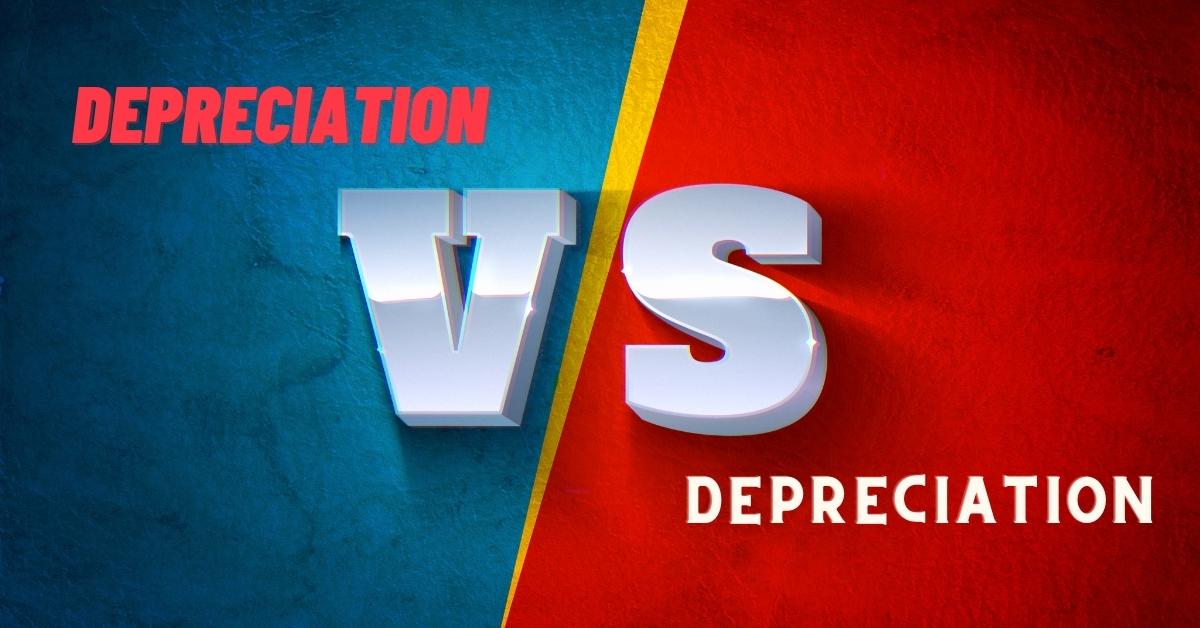Are you wondering about the difference between depletion vs. depreciation? Depletion is the loss of natural resources, like wood, minerals, oil, gems, and precious metals. So, if you own a piece of property with a mine, you would experience a depletion of the assets over time.
Depreciation is the devaluing of tangible assets, like equipment, air conditioners, vehicles, computers, flooring, etc. You cannot deplete tangible assets, but the depletion of resources can cause depreciation.
Learn more about depletion vs. depreciation in this guide with examples, comparisons, and tax tips.

What is the Difference Between Depletion vs. Depreciation?
Depreciation and depletion are both accounting terms, like relation and inflation. Both indicate the gradual devaluing of assets to take a tax deduction or analyze the value of a business. However, depletion occurs when natural resources are used or mined. When no more resources are available, the property is depleted, and only then is the total value of the depletion realized. Until then, the property still has mineral value. Because if you own a gold reserve or lease one, depletion does not occur until you mine the gold. Until then, the value of the site is not decreased. A good portion of the cost for extracting may come in the beginning. However, you have to use that cost to calculate the depletion over the time you produce it.
To recover your money for many tangible items you invest in for your business, you need to depreciate them annually over the asset’s useful life. As a business, you can depreciate many things, like manufacturing equipment, buildings, flooring, air conditioners, vehicles, software, and anything else you have used for over a year.
How Do You Calculate Depletion and Depreciation
Depending on the nature of your business or asset, you may need to calculate depletion or depreciation for your taxes.
Most people and businesses use depreciation instead of taking a depletion percentage deduction. However, you would need to calculate depletion if you own a property with an oil well or a business that harvests or extracts natural resources like gold, iron, cobalt, uranium, marble, etc.
Regarding property or assets that do not include natural resources, you can take an annual tax deduction for depreciation.
Calculating Depletion
To calculate depletion, you subtract the cost of extracting resources or a percentage of the cost of mining from the asset’s value. The IRS does not allow you to take the deduction until you produce income and as you deplete the asset.

So, an oil company cannot deduct oil drilling costs all at once. Instead, the company has to calculate the drilling cost and allocate it as it makes a profit from selling the oil it produces.
To calculate depletion, you first have to find the cost per unit by adding the total cost of acquiring and producing and dividing it by the number of units you expect to produce over the site’s life.
Then, you use the cost per unit and multiply the number of units produced during a period to determine the depletion. The depletion is taken as a deduction and subtracted from the value of the land or lease.
Calculating depletion is complicated. You need to understand the IRS depletion guidelines, and incorrect figures can affect the accuracy of your IRS return filings, which leaves you vulnerable to tax investigations and penalties. So, if you go into the business of extracting natural resources, you should consider hiring a corporate tax attorney.
Calculating Depreciation
Calculating depreciation is similar to doing a depletion calculation. However, it is more straightforward. To calculate depreciation, you divide the total cost by the years the asset is used. Below are the periods for some common depreciable assets:
- Rental Properties: 27.5 years
- Appliances and Office Furniture: 7 years
- Computers, Office Equipment, Motorcycles, Mopeds, Cars, Small Appliances, etc. – 5 years
- Farming Equipment, Tractors, Some Livestock, etc. – 3 years
So, if your office furniture costs $50,000, you must divide that by the 7 years it is usable. So, the annual depreciation is $7,142.86. Each year you take the deduction, you reduce the asset’s value by $7,142.86. So, after the first year, the value of your office furniture would be $42,857.14.
Final Advice on the Difference Between Depletion vs. Depreciation
An easy way to remember the difference between depletion vs. depletion is that depletion applies to natural resources, and depreciation applies to tangible assets you purchase. Hiring a specialized tax accountant or corporate tax attorney is a good idea if you cannot confidently calculate depletion or depreciation.
Read the other guides on our site for information on other finance topics, like how many mortgages you can have.
